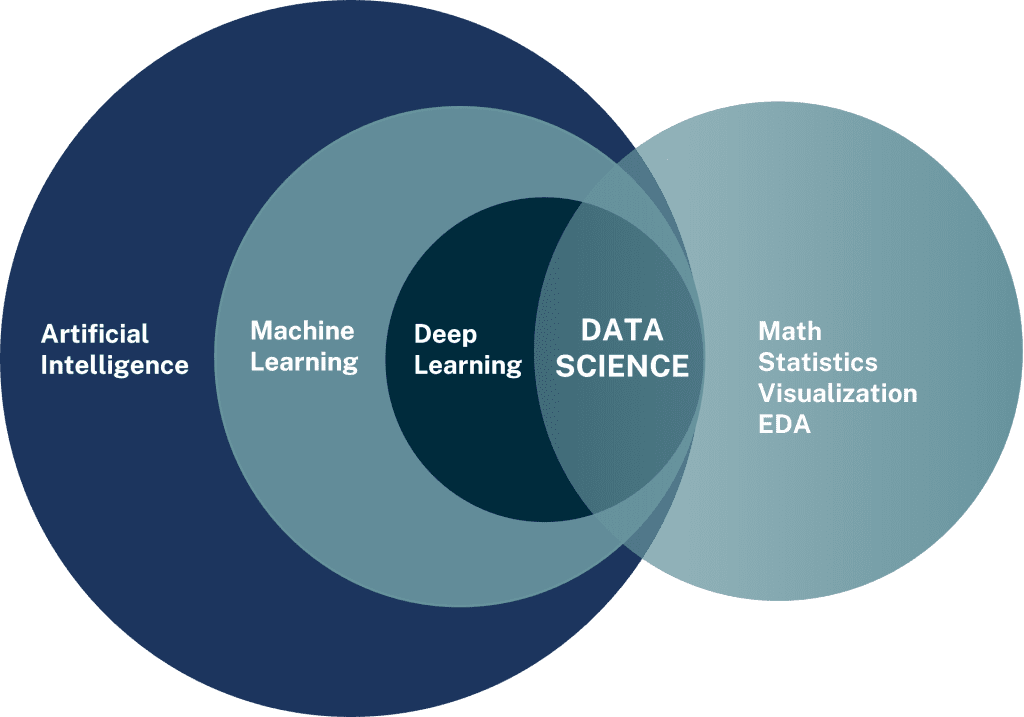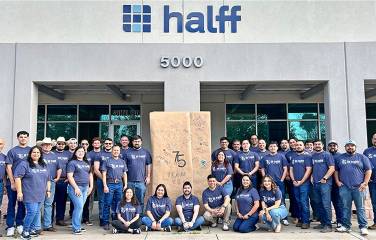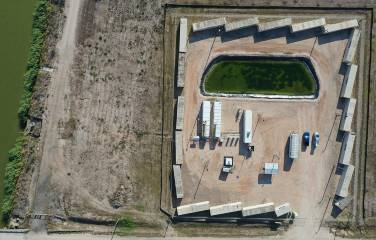How AI and Machine Learning Are Reshaping the AEC Industry
Today’s era of digital transformation enables increasingly intelligent infrastructure to transform the Architecture, Engineering and Construction (AEC) industry.
Artificial intelligence (AI) and machine learning are cutting-edge technologies that are reshaping traditional practices, empowering professionals with information-driven insights and advancing AEC industry benchmarks for efficiency, innovation, decision-support and sustainability.
Table of Contents
- What is Artificial Intelligence (AI)?
- Two Ways That AI and Machine Learning Are Changing AEC
- AI and Machine Learning in Action: Fort Worth, TX
- How Can Halff Help with Your AI/Machine Learning Needs?
What is Artificial Intelligence (AI)?
Everyone is talking about AI these days! But what is it and how is it used in the AEC industry?
AI is a field of computer science where machines are configured to perform tasks that historically required human intelligence, like learning from data, solving problems and providing decision-support.
AI has enabled the AEC industry to become more efficient, predict problems and even produce better designs. AI is being used to categorize things (i.e., asset inventory), predict numeric values (i.e., modeling), and see and perceive the environment through computer vision (i.e., deriving useful information out of unstructured data, such as videos and images).
This 2022 Halff project for the City of Houston shows vehicle class detection and counting made possible by AI and machine learning technology.
It’s helpful to understand the AI-related terms that you may begin to hear in the AEC industry, as well as how these terms differ:
-
-
- Artificial intelligence: Perceiving, synthesizing and inferring information using machine versus human capabilities. Our interest in the AEC industry is leveraging “weak AI,” which is AI that’s directed toward performing a specific task or workflow, in contrast to “strong AI” or artificial consciousness.
- Machine learning: Using algorithms to enable computers to learn from structured data to make predictions, identify patterns (predicted likelihood of failure of assets) and improve performance of specific tasks. Machine learning is a subset of AI that focuses on teaching computers to learn without the need to be programmed for specific tasks.
- Deep learning: Deep learning is a subset and advancement of machine learning that is inspired and modeled by the structure of the human brain, using more complex, multi-layered neural networks. Deep learning techniques can be very good for image processing and object recognition, time series analysis, and natural language processing.
- Data science: Encompasses data evaluation and analysis using all types of AI (including machine learning and deep learning) to gain business insights and drive better business decisions.
- Math, statistics, visualization and exploratory data analysis (EDA): As with other data-driven analyses, the problems tackled with data science and AI techniques rely on fundamental analytic processes and tools (e.g., statistics) to carry out effective evaluation, validation and communication of results.
-
Two Ways That AI and Machine Learning Are Changing AEC
AI and machine learning are transforming the AEC industry.
- 1. AI and machine learning are bringing enhanced design capabilities and optimization to the AEC industry. Learning algorithms can analyze vast datasets, identify patterns and optimize designs that save time, reduce costs and provide a better baseline of information for human experts to carry forward.
Additionally, AI introduces “generative” design techniques, in which algorithms first learn from training data to then generate new design alternatives through unique combinations and manifestations of the learned information. These AI technologies have the potential to streamline design processes, optimize material usage and improve overall project outcomes.
- 2. AI and machine learning are also revolutionizing AEC project management. By leveraging historical project data, machine learning algorithms can forecast project timelines, costs and potential risks. This enables proactive decision-support that is more effective at allocating resources.
AI-powered management systems can provide real-time insights to help project managers monitor progress, identify bottlenecks and parse a multitude of factors. AI/machine learning management tools can boost project efficiency, enhance risk management and free up a project manager’s time to focus on subtle components that require domain expertise.
AI and Machine Learning in Action: Fort Worth, TX
Halff provides interdisciplinary technology solutions through a broad range of AI and machine learning solutions to clients across the southern United States.
The City of Fort Worth looked to Halff for assistance to improve their operational efficiencies in storm drain pipe inspection, defect detection and prioritization of structural and operational corrective actions.
Halff worked to evaluate and implement various technological enhancements, including the application of several AI solutions. To enhance the City’s Storm Drain Rehabilitation Program (SDRP), Halff developed a deep learning object detection model to recognize critical pipe defects. This model leveraged the City’s previously collected closed-circuit television (CCTV) inspection data.
Halff’s machine learning scientists used AI to train the model to identify storm drain defects with a high degree of accuracy. The defect detection model is now being leveraged as part of the City’s SDRP for an added layer of quality control during engineering review of new storm drain CCTV inspection data.
All new CCTV data is being pre-processed with the defect detection model to flag and provide a “second opinion” on potential defects for further expert review.
Smart LOF Model. Halff applied a second AI solution to assist the City of Fort Worth’s SDRP with decision support to guide annual inspection prioritization.
Halff’s Smart Likelihood of Failure, or Smart LOF, machine learning model was used to analyze historical condition results and a variety of physical, spatial and demographic attributes of storm drains to learn the patterns of poor condition. Once learned by the model, these patterns were applied to storm drains that had not been inspected. The Smart LOF model offers nearly a 30% improvement in “true positive” identification of critical defects compared to the more rigid, rule-based risk model used prior to FY23 to make estimates of high-risk areas for near-term inspection.
The Smart LOF analysis improved the City’s operational efficiency and their understanding of drivers of poor storm drain condition. Halff’s Smart LOF model has saved the City an estimated 15-25% (over $1 million/year) on an annual basis.
How Can Halff Help with Your AI/Machine Learning Needs?
Halff is helping further technological innovation within the AEC industry by developing AI techniques (both machine learning and deep learning) that help utilities to understand and avoid unplanned failures, improve operational efficiency and make safer, more cost-effective decisions.
Halff is taking the initiative to turn our clients’ ideas into reality through building a dedicated AI/ML team who specializes in:
-
-
- Machine Learning AI: Applying data and algorithms to imitate the way humans learn, gradually improving accuracy.
- Geospatial AI (Deep Learning): Integrating geospatial data with AI to build spatial insights and extract spatial patterns.
- Computer Vision AI (Deep Learning): Leveraging advanced algorithms to process unstructured data in images, videos, and 3D point clouds for classification and localization of objects in both GPS aware and GPS-denied environments.
-
Demand for AI/machine learning services is building from Halff’s utility clients. Our AI/machine learning capabilities are applied across the full spectrum of planning, design and engineering projects. These include stormwater utilities, land and tree cover classification, finished floor elevation extraction and more.
About Halff
Halff is a leading planning, design and engineering firm with more than 70 years of experience in delivering innovative solutions to communities. Our purpose is to improve lives and communities by turning ideas into reality. Our goal is to improve the quality of life for people by providing exceptional design and planning services that create livable and sustainable environments.
As experts in intelligent infrastructure, Halff helps cities create the infrastructure and systems needed to support the demands of a growing population while minimizing their impact on the environment. From urban planning and transportation to energy management and sustainability, Halff has the expertise to help cities thrive. Our interdisciplinary team of planners, designers, engineers and technology specialists offers expertise in the full life cycle of an intelligent infrastructure or technology-related project — from initial planning and funding, through design and installation on the ground. At Halff, intelligent infrastructure starts with people, not technology.
This is the third article in Halff’s Intelligent Infrastructure Series. To learn more about Halff’s technology solutions, check out our brochure. Halff’s innovative technology leaders can help you better integrate people-centered technology solutions into your next project. Reach out to Halff’s AI/Infrastructure Management Leader Matt Stahl PE, CFM, PGP-AIML (mStahl@halff.com) or Intelligent Infrastructure Leader Matt Bucchin, AICP, LEED Green Associate (mBucchin@halff.com).
Read more articles in Halff’s Intelligent Infrastructure Series:










